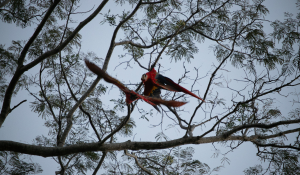The COP29 UN Climate Conference in Baku explained
The Conference of the Parties (COP) is the supreme decision-making body of the United Nations Framework Convention on Climate Change (UNFCCC). It brings together countries that have ratified the UNFCCC to assess progress in addressing climate change and to negotiate strategies and policies to mitigate its effects. Since its inception in 1995, COP meetings have become a pivotal platform for governments, non-governmental organizations, scientists, and activists to collaborate on solutions to curb greenhouse gas emissions, promote sustainable development, and adapt to the already-present impacts of climate change.
In the past, COP conferences have taken place in various countries, with COP26 hosted in Glasgow, UK, in 2021 and COP27 in Sharm El-Sheikh, Egypt, in 2022. Each conference builds upon the commitments made in previous meetings, such as the historic Paris Agreement at COP21 in 2015. COP28 was held in Dubai, UAE, in 2023, and now the world looks toward COP29, which will be hosted in Baku, Azerbaijan, in 2024. This event will continue to push global leaders toward greater climate action and will be crucial in driving international cooperation to meet climate targets.
For more information on the difference between COP16 and COP29, please read our article.
What are the main objectives of COP29?
COP29 will focus on accelerating global efforts to mitigate and adapt to climate change. The primary objectives include reviewing and updating national commitments to reduce greenhouse gas emissions, with an emphasis on achieving the targets set under the Paris Agreement to limit global temperature rise to 1.5°C.
Additionally, COP29 will aim to advance discussions on climate finance, ensuring that developed countries meet their pledges to support developing nations in transitioning to sustainable economies and building resilience against climate impacts. Another key focus will be on loss and damage, as parties seek to establish effective mechanisms to address the irreversible effects of climate change on vulnerable communities. Strengthening international cooperation on carbon markets, nature-based solutions, and clean energy transitions will also be central themes of the conference.
For more information on the impact of global warming on biodiversity, please read our article.
When and who will attend COP29?
COP29 will take place in Baku from November 11 to November 22, 2024. The conference will attract a diverse array of participants, including heads of state, ministers, climate negotiators, representatives from environmental organizations, scientific experts, and private sector leaders. The event will also see significant participation from youth activists and indigenous communities, who are vital voices in the global climate conversation. These stakeholders will work together to assess the progress made since COP28 and negotiate further actions to combat climate change.
This diverse group of attendees will work on advancing climate action, especially about implementing the Paris Agreement and securing funding for climate adaptation in developing nations.
What are the main topics of discussion?
There are many topics of discussion planned for COP29, but the main focus will be:
- New Collective Quantified Goal on Climate Finance (NCQG): One of the key focuses will be reaching a consensus on the NCQG, which aims to increase financial support for developing countries to tackle both mitigation and adaptation efforts. This will build upon previous finance goals set under the Paris Agreement.
- Operationalizing Article 6 of the Paris Agreement: COP29 will prioritize finalizing the operational aspects of Article 6, which enables carbon markets to function globally. This mechanism is critical to boosting climate ambition, enhancing capital markets, and ensuring resources flow to developing nations.
- Loss and Damage Fund: Building on the progress made at COP27 and COP28, discussions will continue around making the Loss and Damage Fund operational to support vulnerable communities, especially in small island developing states (SIDS) and least developed countries (LDCs), who are disproportionately affected by climate change.
These main points highlight the ambitious goals and complex negotiations expected at COP29, with a strong emphasis on finance, cooperation, and global accountability.
Why does ClimateSeed believe that COP29 is important?
ClimateSeed finds COP29 particularly important due to the heightened focus on finalizing the operationalization of Article 6 of the Paris Agreement, which governs carbon markets. With carbon markets playing a crucial role in climate contributions and enabling countries and companies to meet their climate goals, COP29 presents an opportunity for such businesses to align with emerging regulatory frameworks, tap into global carbon trading opportunities, and contribute to market-based solutions.
Furthermore, the event will likely address transparency and finance mechanisms that could impact investment flows and market participation. Engaging in COP29 allows companies to stay ahead of policy changes, shape discussions on the future of carbon credits, and ensure they are well-positioned to meet the evolving standards of climate action.
For more information, read our article on the rise of biodiversity credits.
Sources:
- United Nations Framework Convention on Climate Change (UNFCCC)
- Climate Action Network
- Government of Azerbaijan Climate Report 2024
- COP29
Common Q&As
Companies, particularly those involved in agriculture, construction, and resource extraction, should aim to minimize their impact on natural habitats. Strategies like precision agriculture, vertical farming, and sustainable forestry practices can limit the conversion of wild areas into developed land.
For a deeper dive into this read our article:
The Impact of Global Warming on Biodiversity: How Can Companies Help Preserve It?
Biodiversity credits are related to, but distinct from, voluntary carbon credits. While a carbon credit represents a tonne of carbon dioxide equivalent avoided or removed from the atmosphere, biodiversity credits represent units of biodiversity restored or preserved, which may have a variety of distinctive characteristics.
For more information, read our article:
The Rise of Biodiversity Credits: The Standards to Reach Nature Positive.
Both the Climate COP and Biodiversity COP serve as platforms to address two interconnected yet distinct global environmental challenges—climate change and biodiversity loss—both of which originated from the commitments made at the 1992 Rio Earth Summit.
For more information, read our article: Biodiversity COP: How does it differ from the Climate COP?
Share this
You May Also Like
These Related Stories

Biodiversity COP: How does it differ from the Climate COP?

The COP16 UN Biodiversity Conference in Colombia explained



